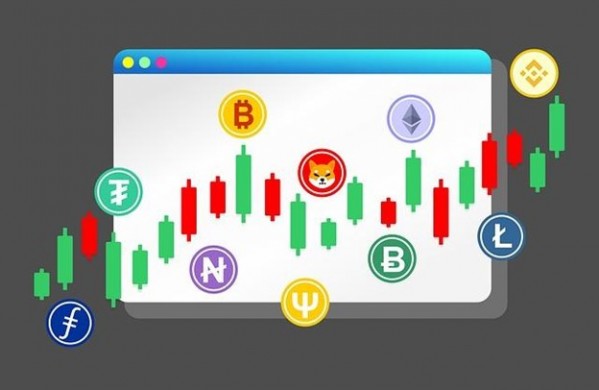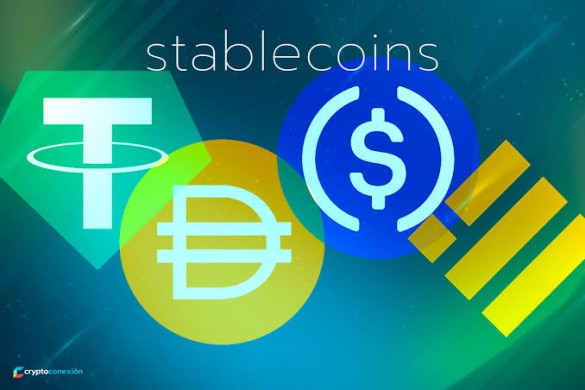The crypto market is showing signs of maturity after years of heightened volatility. This is due to a complex interplay of social, economic, and technological factors like trust, perceived risk, transaction security, and so on. Flows into Bitcoin have far outpaced other digital assets. Bitcoin remains popular among traders and enthusiasts in the crypto industry, but altcoins are evolving with sharper utility and clearer value propositions. The promise of transformative growth comes with the reminder that volatility is a key characteristic and often a catalyst for significant movements in the crypto markets.

In this high-velocity environment, several themes take center stage:
Stablecoins Put Competitive Pressure On Legacy Payment Systems
Stablecoins are a type of cryptocurrency pegged to the value of another asset, often the U.S. dollar, or a commodity, such as gold. They’re commonly used as a bridge to streamline trade between traditional currencies and cryptocurrencies or between different crypto assets. The stability of a stablecoin is equal to the cost of maintaining the backing reserve and the cost of legal compliance, licenses, auditors, and so on. Stablecoins are available on blockchain platforms like Ethereum, Solana, and Ripple, renowned for their well-established and robust infrastructures.
Stablecoin issuers are increasingly looking into applications that extend beyond the confines of the crypto space. There’s growing interest in the potential of stablecoins to enhance the efficiency and functionality of various payment and financial services. The use of stablecoins can improve financial inclusion, both in developed and developing markets, and can boost cross-border payments in general and remittances in particular. They’re also a promising tool for simplifying international trade. Tether, the issuer of USDT, is intensifying its focus on emerging markets in Asia and Latin America.
Institutional Investors Are More Optimistic Thanks To Trump
Following the election of Donald Trump as the 45th president of the United States, the price of Bitcoin broke record after record, and some sources cite peaks in the vicinity of $111,000. This surge was largely due to investor optimism, as many anticipated the new administration would implement policies favorable to digital assets. Trump has long been a supporter of government deregulation, favoring the reduction or elimination of intervention in many areas of the economy. His first executive order guaranteed the judicious expansion and utilization of digital assets, blockchain technology, and associated innovations.
We saw, and continue to see, significant institutional-grade implementations of blockchain technology, including the launch of digital asset custody or the tokenization of private funds. Institutional investors have teams of analysts, traders, and legal experts to guide their decisions because they often adhere to stricter regulatory standards. Despite the volatility, they believe this asset class is here to stay for the long term. The features that institutional investors find most appealing are high potential upside, innovative tech play, and enablement of decentralization.
Hotly Traded Meme Coins Dominate Social Media Feeds
Days before his inauguration as U.S. president, Donald Trump launched $TRUMP, which quickly racked in hundreds of millions of dollars. First Lady Melania Trump also launched a meme coin, $MELANIA, that lost almost half of its value since it began trading. People like owning meme coins, playing with these things, buying them, selling them. They think they’re funny. Putting aside their entertainment value, meme coins have high volatility and limited or no use or functionality, driven by social media hype rather than intrinsic value.
Shiba Inu, Pepe, and Dogecoin have become popular owing to their viral social media presence. On X, Reddit, TikTok, or Telegram, crypto investors and enthusiasts merge around a shared narrative, building communities that drive further engagement and publicity. The evolution of meme coins is inextricably linked with shifts in social media trends and influencer behavior. With all the excitement comes a need for caution. In many instances, the hype leads to dramatic surges in price without corresponding advances in underlying utility or technological developments.
Cryptocurrencies Integrate AI Into Their Blockchain Platforms
Artificial intelligence (AI) is unlike previous waves of technology because it transforms various aspects of society, including technology, business, and even human interaction. The convergence of AI and blockchain technology is finally materializing. There’s a strong, natural fit between the two technologies on account of their relationship with data. AI enhances blockchain systems by automating tasks such as data validation, optimizing network performance, and managing smart contract governance. The integration of AI is critical to keep up with changing user expectations.
Several crypto projects capitalize on AI technology. For example, Fetch.ai (FET) uses AI to create a decentralized digital ecosystem where autonomous agents can interact, negotiate, and transact on behalf of individuals, organizations, and devices. These autonomous economic agents can streamline processes and reduce the need for human intervention. The Render Network originally aimed to establish a distributed network of graphics processing units (GPUs). With time, the project has evolved and is now focused on advancing AI. Its one-of-a-kind model reflects the growing intersection between AI, cryptocurrency, and decentralized finance.
TradFi Institutions Are Embracing DeFi Infrastructure
Traditional finance – or TradFi, if you prefer – is the standard approach to financial activities that rely on established institutions, regulations, and intermediaries (i.e., banks, insurance companies, and stock exchanges). More and more TradFi firms are looking at decentralized finance (DeFi). Assets like real estate, commodities, and government bonds, to name a few, are being tokenized, which allows them to be traded and utilized within DeFi protocols. Bitcoin and Ethereum ETFs allow institutional investors to invest in cryptocurrency without the need to manage wallets or custody issues.
JP Morgan developed a private, permissionless blockchain called Onyx to improve key operations such as settlements for repo, cross-border payments, and asset tokenization. The bank rebranded Onyx as Kinexys to accelerate its adoption. With time, the scope of the blockchain platform expanded to include the issuance of digital deposit tokens and the enablement of real-time, multi currency transactions. Ripple, the company behind XRP, recently acquired the brokerage firm Hidden Road, which could be a sign of cryptocurrency’s TradFi takeover.
Closing Remarks
As the crypto industry continues to grow, its success will depend on how effectively it empowers every stakeholder to navigate this high-stakes environment with confidence.


 Hot Features
Hot Features













